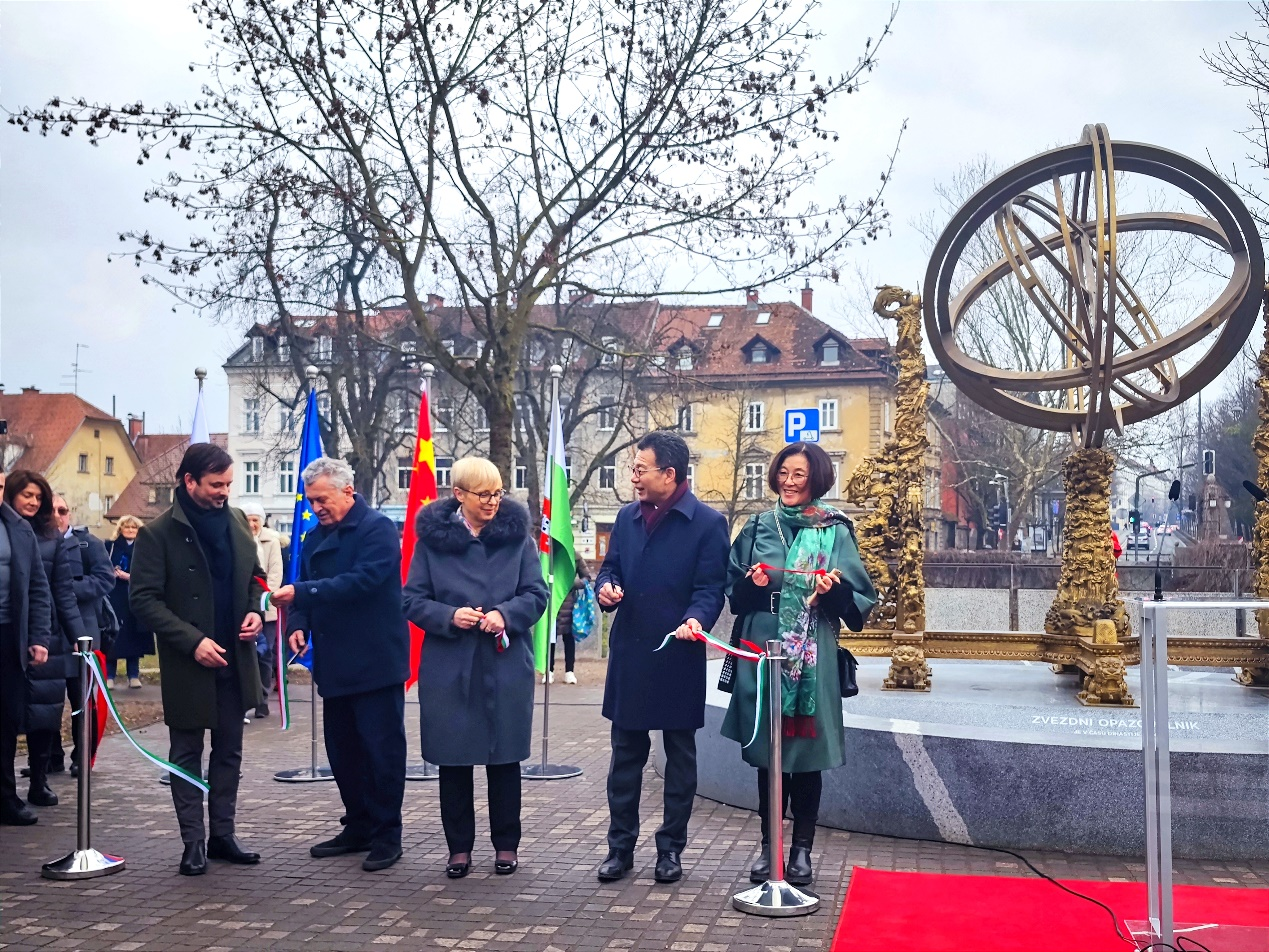On February 6, a full-scale replica of the Elaborate Equatorial Armillary Sphere, overseen by the Beijing Planetarium, was completed in Ljubljana, the capital of Slovenia, also known as the Dragon City, as a symbol of China-Slovenia friendship. The monument arrived in Ljubljana at the end of January and, following week-long assembly and commissioning, was completed before the Chinese Lunar New Year, or the Year of the Loong. On February 6, the Chinese Embassy in Slovenia and the City of Ljubljana jointly hosted the inauguration ceremony, where Chinese Ambassador to Slovenia Wang Shunqing and Slovenian President Nataša Pirc Musar cut the ribbon. The event was attended by more than 200 people, including Slovenia's Former Presidents Milan Kučan and Borut Pahor, Former Prime Minister Miro Cerar, Mayor of Ljubljana Zoran Janković, Deputy Mayor of Ljubljana Rok Žnidaršič, Director of the Archives of the Republic of Slovenia Andrej Nared, as well as the Beijing Planetarium delegation, friends from all walks of life in Slovenia, and representatives of the overseas Chinese community.
In his address, Ambassador Wang described the unveiling of the monument as a historic moment. Over two centuries ago, Slovenian astronomer Augustein de Hallerstein, also known by his Chinese name Liu Songling, came to China and designed the Elaborate Equatorial Armillary Sphere. This creation not only marked the beginning of friendly relations between China and Slovenia, but also facilitated exchanges between Eastern and Western civilizations. President Xi Jinping's Global Civilization Initiative advocates inclusiveness, coexistence, interaction, and mutual learning among civilizations, which holds profound significance for human progress. China stands ready to work with Slovenia and other nations to promote global peace and development and carry forward human civilizations. The Chinese Loong and the Ljubljana Dragon on the monument will continue to bear witness to the renewal of friendship between the two countries as well as the ongoing exchanges between Eastern and Western civilizations.
President Musar extended his congratulations and expressed gratitude to China for its efforts in completing the monument. The astronomical instrument built by Hallerstein over 200 years ago has greatly boosted the interactions between Slovenia and China, and the replica monument serves as a testament to the flourishing bilateral relations today. With this as a new starting point, the two countries will deepen their exchanges and cooperation in various fields including politics, culture, and technology.
In 1744, Emperor Qianlong ordered Chinese and foreign astronomers of the Qintianjian (Imperial Astronomical Bureau) to construct an armillary sphere. The project, which took ten years to complete, was led by Augustein de Hallerstein (1703-1774), who served as the Director of the Imperial Astronomical Bureau. The instrument, which still stands today at the Beijing Ancient Observatory, bears witness to the long-lasting cultural exchange and friendship between China and Slovenia.
During the Summit of Heads of Government of China and Central and Eastern European Countries (CEEC) in 2017, the heads of China and Slovenia agreed to commemorate the friendship between the two nations by erecting a monument featuring a replica of the armillary sphere. Thanks to the unremitting efforts of various sectors, the Chinese Embassy in Slovenia and the Beijing Planetarium began production in 2020. Putting the project high on its agenda, the Beijing Planetarium set up a specialized team to oversee the process, striving for excellence in techniques and workmanship. Despite all the challenges, the replica was finally assembled and accepted at the Beijing Planetarium in November 2023.
During the inauguration, the Beijing Planetarium team also had an exchange with the Archives of the Republic of Slovenia, where Director Andrej Nared presented the Beijing Planetarium with valuable digital resources, including manuscripts by Liu Songling. This exchange not only enriched the holdings of the Beijing Planetarium but also paved the way for future cooperation on research involving the Beijing Ancient Observatory and the prominent Slovenian astronomer.

Ambassador Wang Shunqing (second from the right) and President Musar (third from the right) cut the ribbon for the monument


